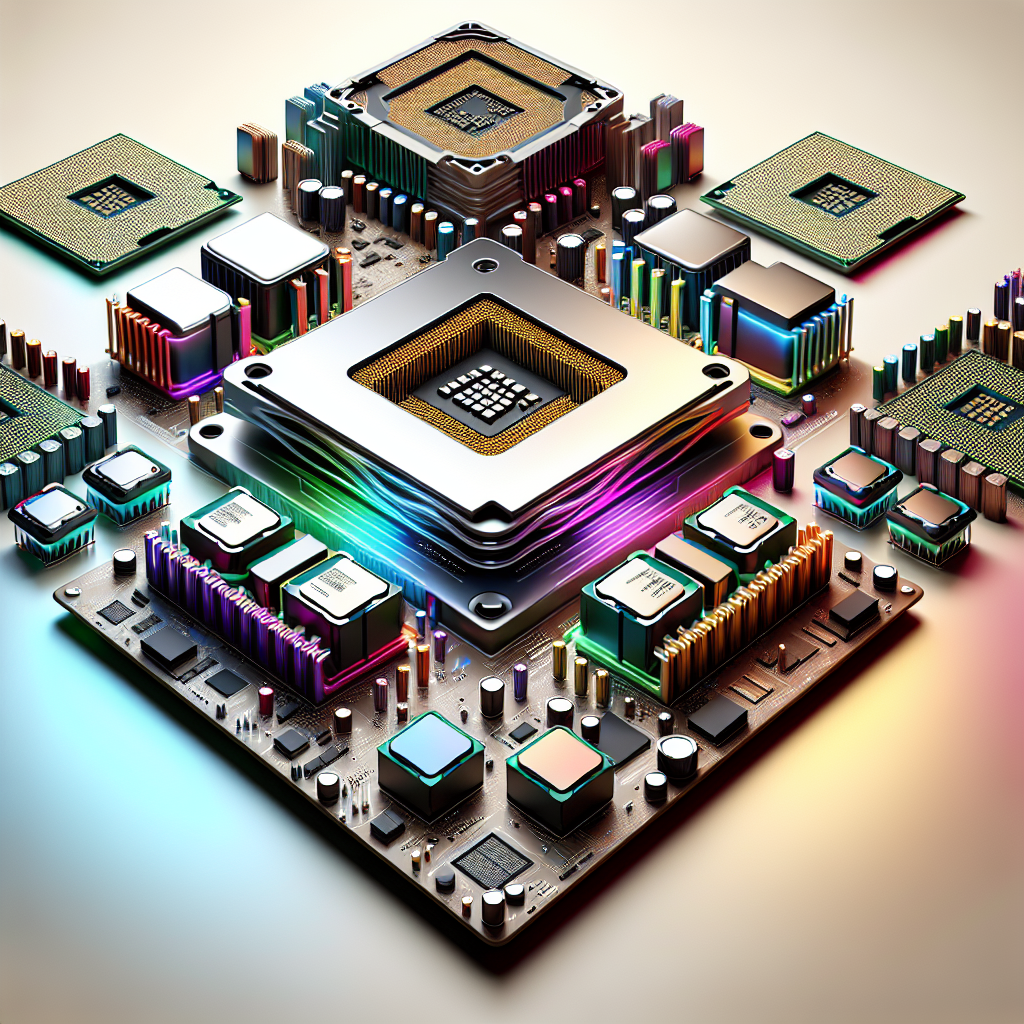The Central Processing Unit (CPU) is the brain of your computer, while the motherboard serves as its central nervous system. Ensuring that these two critical components are compatible is an essential step in building or upgrading a computer. One of the most crucial factors in this compatibility is the CPU socket type. In this article, we delve into how CPUs with different socket types affect motherboard compatibility and what you need to know to make informed decisions.
Understanding CPU Socket Types
Before diving into the specifics, it is essential to understand what a CPU socket is. The CPU socket is a physical interface that connects the CPU to the motherboard. Each socket type has a unique configuration of pin arrangements, and it determines which type of CPU can be installed on the motherboard.
| Socket Type | CPU Families | Examples |
|---|---|---|
| LGA 1151 | Intel | Core i3, i5, i7, i9 (8th and 9th Gen) |
| AM4 | AMD | Ryzen 3, 5, 7, 9 |
| LGA 1200 | Intel | Core i3, i5, i7, i9 (10th and 11th Gen) |
| TR4 | AMD | Ryzen Threadripper |
Why Socket Compatibility Matters
Socket compatibility between the CPU and motherboard is crucial for several reasons:
- Electrical Compatibility: Different socket types have different voltage and power requirements. Incompatible pairings could damage the CPU or motherboard.
- Physical Fit: The CPU must fit perfectly into the socket. Even a minor difference in pin configuration can make it impossible to install the CPU correctly.
- Firmware Support: The motherboard’s firmware (BIOS/UEFI) must support the specific CPU to ensure full functionality, including features like overclocking and power management.
Intel vs. AMD Socket Types
Intel and AMD, the two leading CPU manufacturers, have their proprietary socket types, each designed to work with their respective processor families.
Intel Socket Types
Intel’s socket naming convention usually starts with ‘LGA’ (Land Grid Array), followed by a number that indicates the pin count. For example, LGA 1151 features 1,151 pins. Intel frequently updates their socket types to keep up with advancements in CPU technology.
AMD Socket Types
AMD employs a more straightforward naming scheme but also makes significant upgrades that might require a new socket. AM4, for example, has been the mainstay for AMD’s mainstream desktop processors since the Ryzen series was introduced.
Future-Proofing Your Build
One of the ongoing concerns for tech enthusiasts is future-proofing their builds. Picking a motherboard with future CPU upgrades in mind can save you money and hassle in the long run.
- Check Compatibility Lists: Manufacturers usually provide detailed compatibility lists for motherboards, making it easier to see which future CPUs will be supported.
- Look for BIOS Update Options: Some motherboards allow BIOS updates to support newer CPUs, extending the motherboard’s lifespan.
Choosing the Right Motherboard
Selecting the right motherboard involves considering multiple factors beyond socket type, such as:
Form Factor
The size of the motherboard (e.g., ATX, micro-ATX) should fit in your chosen case.
Chipset
The chipset determines the motherboard’s feature set, including overclocking support, number of PCIe lanes, and connectivity options.
RAM Compatibility
Ensure the motherboard supports the type and amount of RAM you intend to use.
Expansion Slots and Ports
Consider the number of USB ports, PCIe slots, and other expansion opportunities.
Common Mistakes to Avoid
While selecting a CPU and motherboard, avoid these common pitfalls:
- Ignoring TDP: The Thermal Design Power (TDP) of the CPU must be supported by the motherboard’s power delivery system.
- Not Checking Dimensions: Some high-end CPUs require larger coolers, which may not fit in smaller cases or block RAM slots.
- Outdated BIOS: Older motherboards may not support newer CPUs without a BIOS update, which can be tricky if you don’t have an older CPU lying around.
Conclusion
Understanding how CPUs with different socket types affect motherboard compatibility is crucial for building a stable and future-proof computer system. By paying attention to socket types, checking for electrical and firmware compatibility, and considering future upgrades, you can ensure that your custom PC build will serve you well for years to come.
